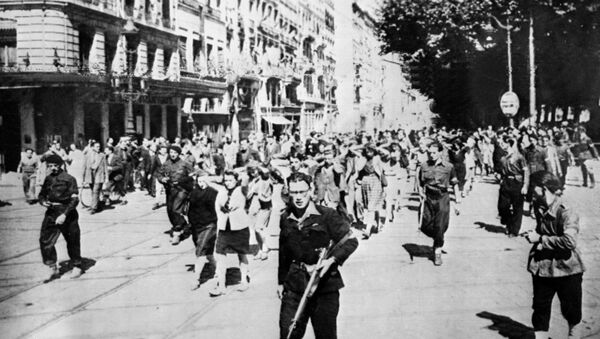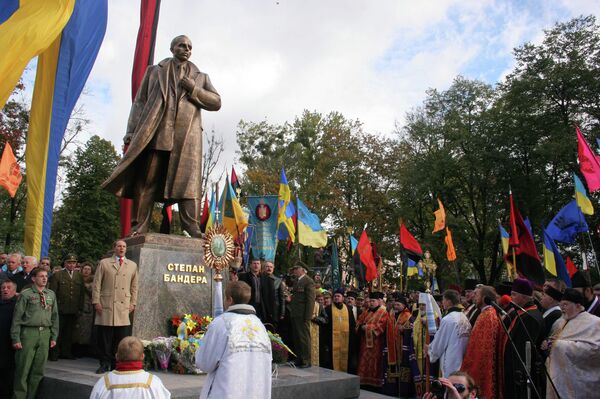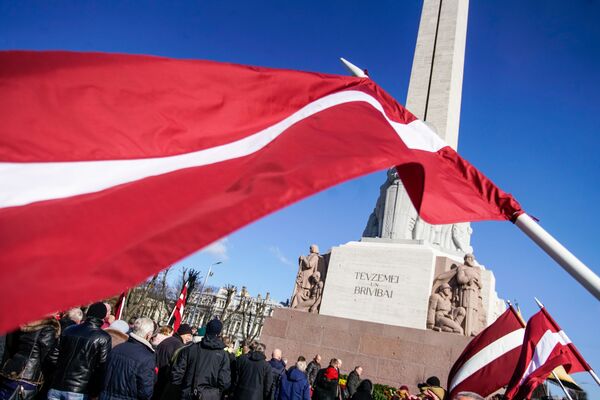In May 1945 the Germans finally surrendered after six years of gruesome warfare and the full horror of the Holocaust and other Nazi atrocities became clear.
In Berlin and across the fallen Reich, a band of non-Germans found themselves in an invidious position - trying to explain why they had sided with Adolf Hitler, or at least failed to show any physical or political resistance.
Lord Haw Haw
Their number included William Joyce, who was born in New York but grew up in Ireland and England.
Joyce joined the British Union of Fascists - Oswald Mosley’s famous Blackshirts - in the 1930s but later moved to Germany and spent the war broadcasting from Hamburg.
Dubbed Lord Haw Haw by the English press, his Germany Calling broadcasts were intended to demoralise British, American and Canadian troops.
The end of William Joyce aka Lord Haw Haw
— Never Again UK (@Never_Again_UK_) May 2, 2020
Nazi propaganda broadcaster
The good old days when traitors were hanged
Nowadays he would have gone to prison
Early release on license, sold his story to the media
television appearances and a book deal pic.twitter.com/oriFjF12mO
After the war he was captured and sent back to London where he became the last person to be hanged for treason, in January 1946.
Dave Fript, US Holocaust Museum Teacher Fellow and Education Lead for the Courtroom 600 project, explained why none of the Nazi collaborators were in the dock at the Nuremberg War Crimes Trial.
Mr Fript said: "In a series of conferences that began long before the end of the war, the Allies agreed that the leaders of Germany would be held accountable for the ‘crimes and massacres’ that were occurring, and it was later agreed that the leaders of Nazi Germany would be put on trial not just for those crimes but also for breaking treaties and agreements that had outlawed the making of wars of aggression."
He added: “Non-German nationals like (Vidkun) Quisling and William Joyce were tried for treason by their own people.”
William Joyce’s boss, Hans Fritzche, was acquitted of conspiracy and war crimes at the Nuremberg trials. Journalist William L. Shirer said of him: “No-one in the courtroom, including Fritzsche, seemed to know why he was there - he was too small a fry - unless it were as a ghost for (Nazi propaganda chief Joseph) Goebbels.”
Vidkun Quisling
Vidkun Quisling, the Norwegian collaborator whose surname has become a synonym for traitors, was Prime Minister of a Nazi puppet state in Oslo from 1942 until 1945.
He was convicted of high treason and murder in a Norwegian court and executed at Akershus Castle in October 1945.
Mr Fript said: "No collaborators were tried in Germany. Individual German officers were tried in the various occupied nations, and the Russians had several ‘trials’ of the Germans captured in the territory the Soviets reoccupied. But each individual nation was given the right to deal with their own nationals in accordance with their own standards of justice. For example, Quisling was executed along with many other collaborators in Norway after a series of trials that occurred throughout the late 1940s."
Stepan Bandera
Many Ukrainian nationalists had also sought to curry favour with the invading German army in 1941 and foremost among these was Stepan Bandera.
Between 1942 and 1943 Bandera and his gang of hoodlums conducted a “reign of terror” against Poles and Jews in the occupied Ukraine.
He later fell out with Hitler’s regime after he refused to give up the idea of a Ukrainian state and was imprisoned at Sachsenhausen.
But at the end of the war he was sheltered by the Office of Strategic Services (OSS), which would later become the CIA.
In October 1946 the Soviets wrote to General Lucius Clay, who was in charge of the US occupying forces in Germany, and asked him to hand over Bandera.
General Clay disingenuously wrote back, claiming they were still “trying to locate” Bandera.
By 1947 the CIA had decided not to work with Bandera or his Ukrainian nationalists any more because they had been “penetrated by Soviet intelligence.”
Tellingly the CIA file goes on to say: "The fact that many of the Ukrainian leaders and organisations had worked with the Nazis was not regarded as a decisive factor."
In 1959 Bandera was assassinated in Munich by KGB agents but in recent years Ukrainian nationalists have tried to rehabilitate his reputation.
In 2010 attempts were made to posthumously award him a Hero of the Ukraine honour and two years ago more than 1,000 Ukrainian nationalists marched through Kiev to commemorate his birth.
Michael Kedia
One of the most ironic group of collaborators was the Georgische Legion, who fought alongside the Waffen SS on the Eastern Front.
Joseph Stalin, the leader of the Soviet Union, was an ethnic Georgian but many of his countrymen wanted to be part of an independent nation and threw their lot in with the Nazis when Hitler invaded in the summer of 1941.
In 1940 a group of Georgian émigrés in Paris, including Michael Kedia, also began collaborating with the Nazi occupiers.
As the war turned sour for Germany after the battle of Stalingrad, Hitler increasingly distrusted what were referred to as Osttruppen (Eastern Troops) and transferred many to occupation duties in western Europe.
In April 1945 a group of 800 members of the Georgische Legion launched an uprising against their SS commanders on the Dutch island of Texel.
The fighting continued until 20 May 1945 - almost two weeks after VE Day - and claimed the lives of 565 Georgians - including the Legion’s leader Shalva Loladze, 800 German soldiers and 120 locals.
Michael Kedia had moved from Paris to Berlin as the war progressed but, with the Red Army closing in, he fled to Switzerland and sought sanctuary.
A CIA document later revealed: “Kedia…hoped to contact the International Red Cross to assure the safety of the Georgians in Germany so as to prevent their repatriation to the Soviet Union. He also sought Allied protection of some 100 officials, both German and non-German, who were ‘most active in anti-Russian activities’.”
The CIA was not keen to engage with Kedia, because “his fanatical anti-communism... amounted to a strong desire to see an early war between Russia and the US as a means of realising the independence of the Caucasus.”
They regarded him as an “opportunist” and the document ends by saying: “American intelligence kept Kedia at a distance for the next couple of years until he simply disappeared.”
P. G. Wodehouse
The English author P. G. Wodehouse, who invented the much-loved characters of Jeeves and Wooster, remains a household name in Britain.
But few realise he actually spent most of the war in Berlin and was investigated for being a Nazi collaborator.
Wodehouse had been living as a tax exile in France when the war broke out and after the Germans occupied the nearby town of Le Touquet he was interned in a camp in Belgium.
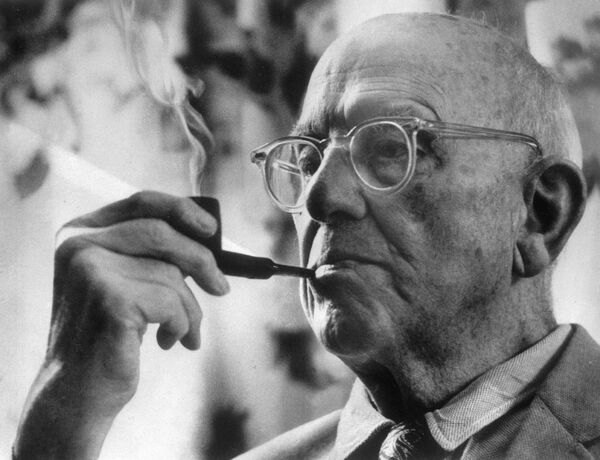
He was released an in June 1941 was taken to Berlin, where he was put up in the luxury Hotel Adlon and was persuaded to make a series of light-hearted radio broadcasts, entitled "How to be an Internee Without Previous Training."
Although the broadcasts were not strictly propaganda, they did not go down well in London, which was being heavily bombed by the Luftwaffe at the time.
After the war Wodehouse moved to the United States and was vilified in Britain, where his books were removed from libraries and he was banned by the BBC.
In excerpts from his unfinished memoirs, published by the Times of Israel in 2016, Wodehouse admitted the broadcasts were a mistake but mockingly wrote: “I overlooked completely the dangerous possibility that a wave of pro-German sentiment might be created in the United States by such revelations on my part as that when in camp I read Shakespeare, that when internees ran out of tobacco they smoked tea, that the Kommandant at Huy had short legs and didn’t like walking up hills, and that there was an unpleasant smell in my cell at Loos prison.”
Wodehouse was knighted a month before he died in 1975 but the National Archives has a copy of an exchange of letters from 1978 between the Attorney General’s office and the Home Office about why he had never been prosecuted, why he had been knighted and whether his MI5 file could be released early.
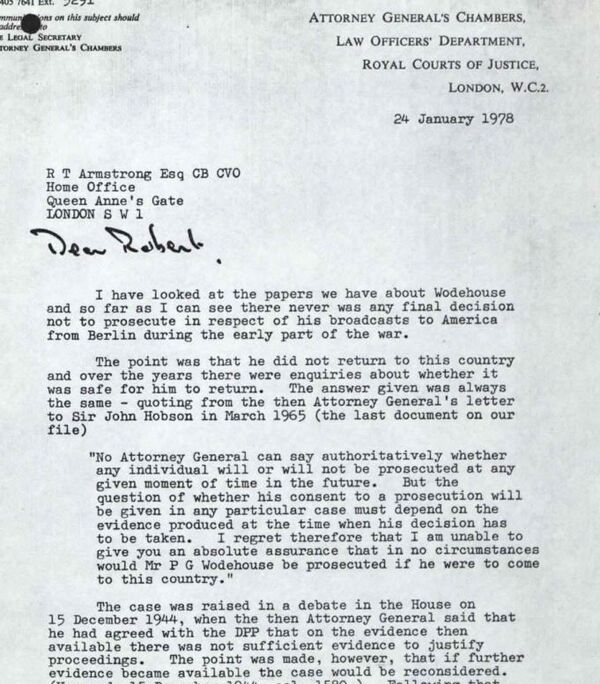
In one letter Robert Armstrong, a senior Home Office civil servant, writes: "For a number of years before January 1975 successive Prime Ministers received recommendations to the effect that both Charlie Chaplin and P G Wodehouse ought to be honoured."
Chaplin had been accused of being a communist sympathiser in the 1940s.
The letter goes on: “By the autumn of 1974 it was felt that in both cases the element of political controversy was sufficiently remote in time not to be regarded as a bar and that the time had come to forgive and forget.”
Arturs Grava and Others
There were many other Nazi collaborators during the war.
Some - such as women in France who slept with German soldiers - got off lightly, with being tarred and feathered or having their hair shaved off.
Others - like John Amery, an English fascist whose British Free Corps fought with the Germans and the Italians - were executed. Amery was captured in northern Italy, sent back to England, convicted of treason and hanged at Wandsworth prison in December 1945.
Theodore Schurch, 27, was also executed in January 1946.
Schurch had been a British soldier but was captured by Axis forces at Tobruk in 1942 and agreed to work for Italian and German intelligence. He was sent undercover into prisoner of war camps. He was arrested in Rome in March 1945 and sent back to England, where he was convicted of treachery.
One is still alive. Arturs Grava, now 95, was a Latvian who joined the Waffen SS after the German invasion of the Soviet Union.
In a Sputnik article in March this year Grava was quoted as saying: "I try to look at it with the eyes I had at that time. If one could have predicted the outcome of the war then, of course, it was a mistake."
Some historians have claimed the Allies imposed "victors’ justice" at the end of the war and Mr Fript said there were “legitimate questions” as to whether the Nuremberg trials or any of the other post-war judicial investigations were actually legal.
Mr Fript concluded: "There are questions as to why Allied leaders were not put on trial for their war crimes such as the fire bombings of German cities. There are questions about how Stalin's judges could be on the bench when Stalin was as guilty as Hitler for war crimes and crimes against humanity."

